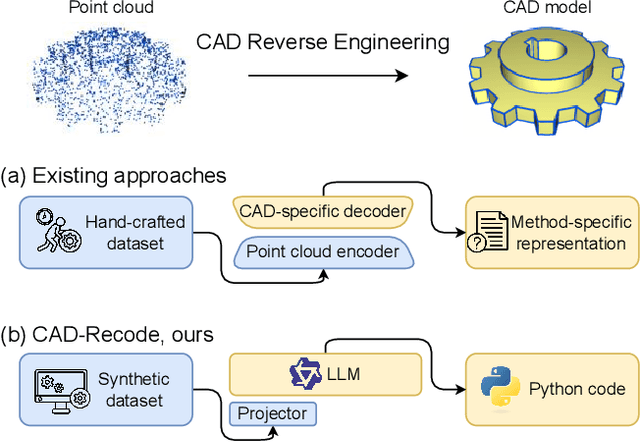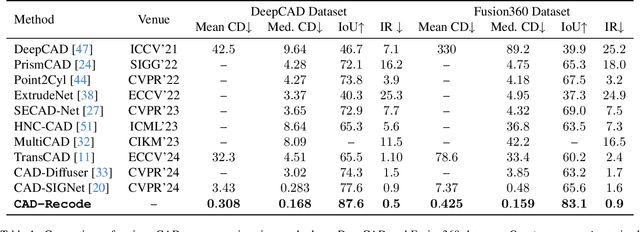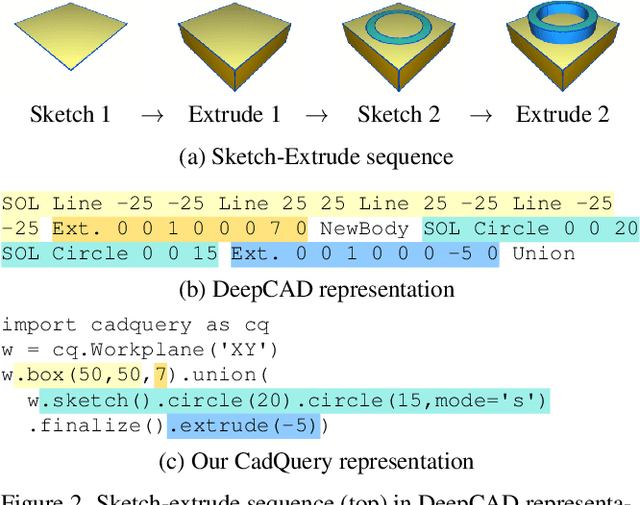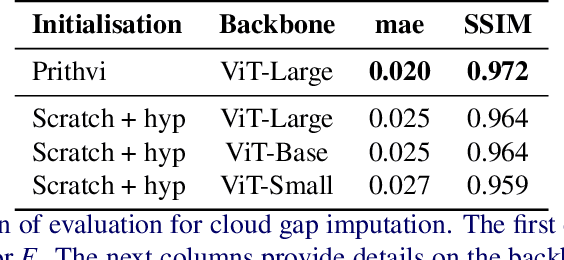Anis Kacem
Domain Adaptation for Multi-label Image Classification: a Discriminator-free Approach
May 20, 2025Abstract:This paper introduces a discriminator-free adversarial-based approach termed DDA-MLIC for Unsupervised Domain Adaptation (UDA) in the context of Multi-Label Image Classification (MLIC). While recent efforts have explored adversarial-based UDA methods for MLIC, they typically include an additional discriminator subnet. Nevertheless, decoupling the classification and the discrimination tasks may harm their task-specific discriminative power. Herein, we address this challenge by presenting a novel adversarial critic directly derived from the task-specific classifier. Specifically, we employ a two-component Gaussian Mixture Model (GMM) to model both source and target predictions, distinguishing between two distinct clusters. Instead of using the traditional Expectation Maximization (EM) algorithm, our approach utilizes a Deep Neural Network (DNN) to estimate the parameters of each GMM component. Subsequently, the source and target GMM parameters are leveraged to formulate an adversarial loss using the Fr\'echet distance. The proposed framework is therefore not only fully differentiable but is also cost-effective as it avoids the expensive iterative process usually induced by the standard EM method. The proposed method is evaluated on several multi-label image datasets covering three different types of domain shift. The obtained results demonstrate that DDA-MLIC outperforms existing state-of-the-art methods in terms of precision while requiring a lower number of parameters. The code is made publicly available at github.com/cvi2snt/DDA-MLIC.
MultiMAE Meets Earth Observation: Pre-training Multi-modal Multi-task Masked Autoencoders for Earth Observation Tasks
May 20, 2025Abstract:Multi-modal data in Earth Observation (EO) presents a huge opportunity for improving transfer learning capabilities when pre-training deep learning models. Unlike prior work that often overlooks multi-modal EO data, recent methods have started to include it, resulting in more effective pre-training strategies. However, existing approaches commonly face challenges in effectively transferring learning to downstream tasks where the structure of available data differs from that used during pre-training. This paper addresses this limitation by exploring a more flexible multi-modal, multi-task pre-training strategy for EO data. Specifically, we adopt a Multi-modal Multi-task Masked Autoencoder (MultiMAE) that we pre-train by reconstructing diverse input modalities, including spectral, elevation, and segmentation data. The pre-trained model demonstrates robust transfer learning capabilities, outperforming state-of-the-art methods on various EO datasets for classification and segmentation tasks. Our approach exhibits significant flexibility, handling diverse input configurations without requiring modality-specific pre-trained models. Code will be available at: https://github.com/josesosajs/multimae-meets-eo.
Uncertainty-Aware Knowledge Distillation for Compact and Efficient 6DoF Pose Estimation
Mar 17, 2025Abstract:Compact and efficient 6DoF object pose estimation is crucial in applications such as robotics, augmented reality, and space autonomous navigation systems, where lightweight models are critical for real-time accurate performance. This paper introduces a novel uncertainty-aware end-to-end Knowledge Distillation (KD) framework focused on keypoint-based 6DoF pose estimation. Keypoints predicted by a large teacher model exhibit varying levels of uncertainty that can be exploited within the distillation process to enhance the accuracy of the student model while ensuring its compactness. To this end, we propose a distillation strategy that aligns the student and teacher predictions by adjusting the knowledge transfer based on the uncertainty associated with each teacher keypoint prediction. Additionally, the proposed KD leverages this uncertainty-aware alignment of keypoints to transfer the knowledge at key locations of their respective feature maps. Experiments on the widely-used LINEMOD benchmark demonstrate the effectiveness of our method, achieving superior 6DoF object pose estimation with lightweight models compared to state-of-the-art approaches. Further validation on the SPEED+ dataset for spacecraft pose estimation highlights the robustness of our approach under diverse 6DoF pose estimation scenarios.
When Unsupervised Domain Adaptation meets One-class Anomaly Detection: Addressing the Two-fold Unsupervised Curse by Leveraging Anomaly Scarcity
Feb 28, 2025Abstract:This paper introduces the first fully unsupervised domain adaptation (UDA) framework for unsupervised anomaly detection (UAD). The performance of UAD techniques degrades significantly in the presence of a domain shift, difficult to avoid in a real-world setting. While UDA has contributed to solving this issue in binary and multi-class classification, such a strategy is ill-posed in UAD. This might be explained by the unsupervised nature of the two tasks, namely, domain adaptation and anomaly detection. Herein, we first formulate this problem that we call the two-fold unsupervised curse. Then, we propose a pioneering solution to this curse, considered intractable so far, by assuming that anomalies are rare. Specifically, we leverage clustering techniques to identify a dominant cluster in the target feature space. Posed as the normal cluster, the latter is aligned with the source normal features. Concretely, given a one-class source set and an unlabeled target set composed mostly of normal data and some anomalies, we fit the source features within a hypersphere while jointly aligning them with the features of the dominant cluster from the target set. The paper provides extensive experiments and analysis on common adaptation benchmarks for anomaly detection, demonstrating the relevance of both the newly introduced paradigm and the proposed approach. The code will be made publicly available.
Vulnerability-Aware Spatio-Temporal Learning for Generalizable and Interpretable Deepfake Video Detection
Jan 02, 2025



Abstract:Detecting deepfake videos is highly challenging due to the complex intertwined spatial and temporal artifacts in forged sequences. Most recent approaches rely on binary classifiers trained on both real and fake data. However, such methods may struggle to focus on important artifacts, which can hinder their generalization capability. Additionally, these models often lack interpretability, making it difficult to understand how predictions are made. To address these issues, we propose FakeSTormer, offering two key contributions. First, we introduce a multi-task learning framework with additional spatial and temporal branches that enable the model to focus on subtle spatio-temporal artifacts. These branches also provide interpretability by highlighting video regions that may contain artifacts. Second, we propose a video-level data synthesis algorithm that generates pseudo-fake videos with subtle artifacts, providing the model with high-quality samples and ground truth data for our spatial and temporal branches. Extensive experiments on several challenging benchmarks demonstrate the competitiveness of our approach compared to recent state-of-the-art methods. The code is available at https://github.com/10Ring/FakeSTormer.
CAD-Recode: Reverse Engineering CAD Code from Point Clouds
Dec 18, 2024



Abstract:Computer-Aided Design (CAD) models are typically constructed by sequentially drawing parametric sketches and applying CAD operations to obtain a 3D model. The problem of 3D CAD reverse engineering consists of reconstructing the sketch and CAD operation sequences from 3D representations such as point clouds. In this paper, we address this challenge through novel contributions across three levels: CAD sequence representation, network design, and dataset. In particular, we represent CAD sketch-extrude sequences as Python code. The proposed CAD-Recode translates a point cloud into Python code that, when executed, reconstructs the CAD model. Taking advantage of the exposure of pre-trained Large Language Models (LLMs) to Python code, we leverage a relatively small LLM as a decoder for CAD-Recode and combine it with a lightweight point cloud projector. CAD-Recode is trained solely on a proposed synthetic dataset of one million diverse CAD sequences. CAD-Recode significantly outperforms existing methods across three datasets while requiring fewer input points. Notably, it achieves 10 times lower mean Chamfer distance than state-of-the-art methods on DeepCAD and Fusion360 datasets. Furthermore, we show that our CAD Python code output is interpretable by off-the-shelf LLMs, enabling CAD editing and CAD-specific question answering from point clouds.
CAD-Assistant: Tool-Augmented VLLMs as Generic CAD Task Solvers?
Dec 18, 2024Abstract:We propose CAD-Assistant, a general-purpose CAD agent for AI-assisted design. Our approach is based on a powerful Vision and Large Language Model (VLLM) as a planner and a tool-augmentation paradigm using CAD-specific modules. CAD-Assistant addresses multimodal user queries by generating actions that are iteratively executed on a Python interpreter equipped with the FreeCAD software, accessed via its Python API. Our framework is able to assess the impact of generated CAD commands on geometry and adapts subsequent actions based on the evolving state of the CAD design. We consider a wide range of CAD-specific tools including Python libraries, modules of the FreeCAD Python API, helpful routines, rendering functions and other specialized modules. We evaluate our method on multiple CAD benchmarks and qualitatively demonstrate the potential of tool-augmented VLLMs as generic CAD task solvers across diverse CAD workflows.
Hybrid Attention for Robust RGB-T Pedestrian Detection in Real-World Conditions
Nov 06, 2024



Abstract:Multispectral pedestrian detection has gained significant attention in recent years, particularly in autonomous driving applications. To address the challenges posed by adversarial illumination conditions, the combination of thermal and visible images has demonstrated its advantages. However, existing fusion methods rely on the critical assumption that the RGB-Thermal (RGB-T) image pairs are fully overlapping. These assumptions often do not hold in real-world applications, where only partial overlap between images can occur due to sensors configuration. Moreover, sensor failure can cause loss of information in one modality. In this paper, we propose a novel module called the Hybrid Attention (HA) mechanism as our main contribution to mitigate performance degradation caused by partial overlap and sensor failure, i.e. when at least part of the scene is acquired by only one sensor. We propose an improved RGB-T fusion algorithm, robust against partial overlap and sensor failure encountered during inference in real-world applications. We also leverage a mobile-friendly backbone to cope with resource constraints in embedded systems. We conducted experiments by simulating various partial overlap and sensor failure scenarios to evaluate the performance of our proposed method. The results demonstrate that our approach outperforms state-of-the-art methods, showcasing its superiority in handling real-world challenges.
DAVINCI: A Single-Stage Architecture for Constrained CAD Sketch Inference
Oct 30, 2024Abstract:This work presents DAVINCI, a unified architecture for single-stage Computer-Aided Design (CAD) sketch parameterization and constraint inference directly from raster sketch images. By jointly learning both outputs, DAVINCI minimizes error accumulation and enhances the performance of constrained CAD sketch inference. Notably, DAVINCI achieves state-of-the-art results on the large-scale SketchGraphs dataset, demonstrating effectiveness on both precise and hand-drawn raster CAD sketches. To reduce DAVINCI's reliance on large-scale annotated datasets, we explore the efficacy of CAD sketch augmentations. We introduce Constraint-Preserving Transformations (CPTs), i.e. random permutations of the parametric primitives of a CAD sketch that preserve its constraints. This data augmentation strategy allows DAVINCI to achieve reasonable performance when trained with only 0.1% of the SketchGraphs dataset. Furthermore, this work contributes a new version of SketchGraphs, augmented with CPTs. The newly introduced CPTSketchGraphs dataset includes 80 million CPT-augmented sketches, thus providing a rich resource for future research in the CAD sketch domain.
How Effective is Pre-training of Large Masked Autoencoders for Downstream Earth Observation Tasks?
Sep 27, 2024



Abstract:Self-supervised pre-training has proven highly effective for many computer vision tasks, particularly when labelled data are scarce. In the context of Earth Observation (EO), foundation models and various other Vision Transformer (ViT)-based approaches have been successfully applied for transfer learning to downstream tasks. However, it remains unclear under which conditions pre-trained models offer significant advantages over training from scratch. In this study, we investigate the effectiveness of pre-training ViT-based Masked Autoencoders (MAE) for downstream EO tasks, focusing on reconstruction, segmentation, and classification. We consider two large ViT-based MAE pre-trained models: a foundation model (Prithvi) and SatMAE. We evaluate Prithvi on reconstruction and segmentation-based downstream tasks, and for SatMAE we assess its performance on a classification downstream task. Our findings suggest that pre-training is particularly beneficial when the fine-tuning task closely resembles the pre-training task, e.g. reconstruction. In contrast, for tasks such as segmentation or classification, training from scratch with specific hyperparameter adjustments proved to be equally or more effective.
 Add to Chrome
Add to Chrome Add to Firefox
Add to Firefox Add to Edge
Add to Edge